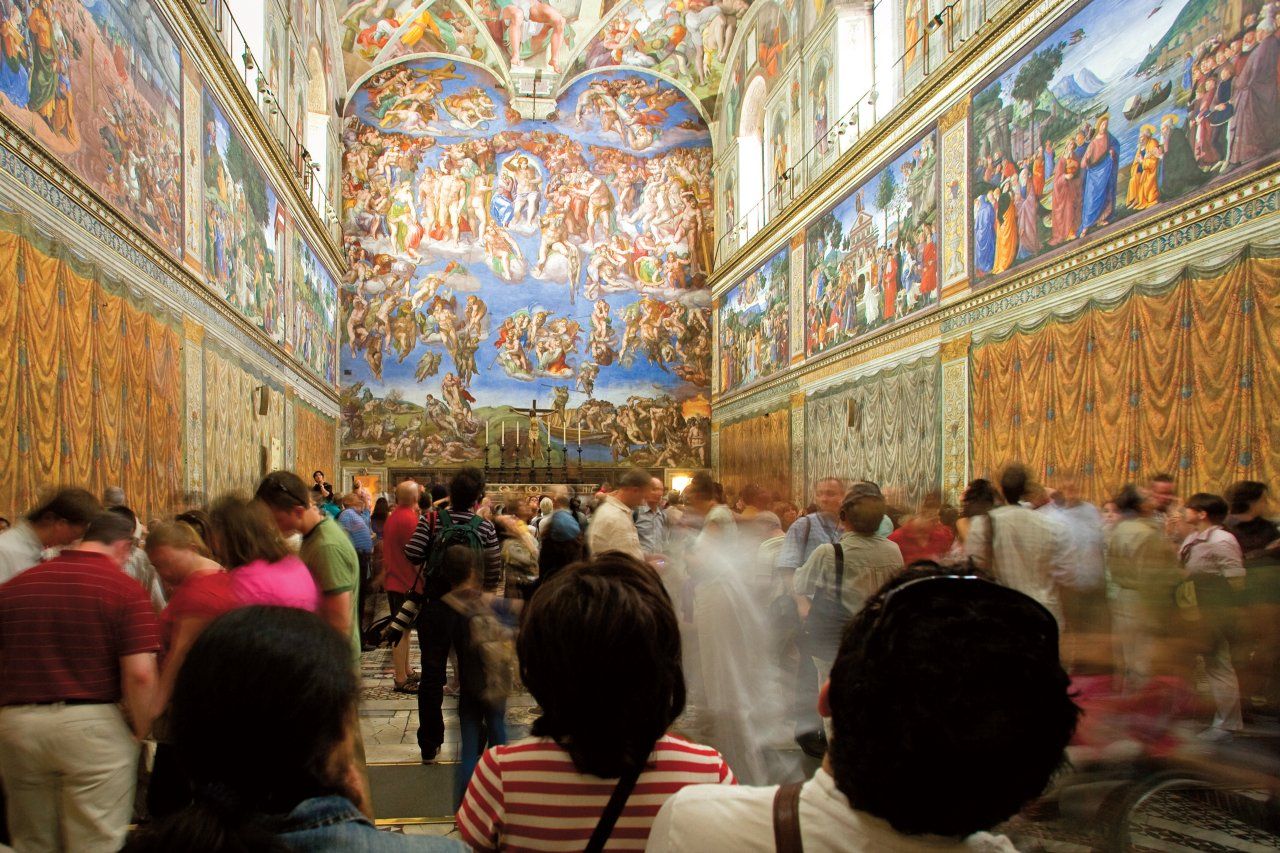
When Michelangelo started painting the Sistine Chapel ceiling in 1508, he knew well the chapel's importance as the seat of papal conclaves, but he likely never envisioned that 5 million tourists would come to see it every year. Soon those millions of visitors will have to pass through a chilly vacuum tunnel, effectively dusting them off and cooling them down to stop their dandruff, saliva, and sweat from destroying the masterpiece.
The state-of-the art cleaning system is being fitted in the foyer before the main entrance to the chapel and is expected to start sucking the dust and loose hair off visitors sometime later this year. The chamber will consist of a 100-meter-long adhesive carpet flanked by suction vents that will clean the bottoms of visitors' shoes and lift everything from loose skin cells to dandruff flakes from their clothing. The temperature along the carpet will also be lowered to chill the tourists to reduce the vapors from sweat that contribute to the grime rising up to the plaster.
Vatican Museums director Antonio Paolucci says that rather than controlling the number of visitors to help curb the environmental pollutants they carry, which he says is "unthinkable," he'd rather clean them off. "Dust, temperature, humidity, and carbon dioxide are the great enemies of the paintings," says Paolucci, who would also like to purify visitors' minds by incorporating an educational component to the cleaning chamber in order to also prepare them intellectually for what they are about to see.
The chapel, which features more than 300 intricate figures painted by Michelangelo, Botticelli, Perugino, and Pinturicchio, spans 2,500 square meters of ceiling and walls. The most famous features are Michelangelo's frescoed ceiling, depicting nine scenes from the Book of Genesis, and his haunting rendition of the Last Judgment on the chapel's altar wall. Paolucci believes that many of the chapel's visitors miss the point of the paintings by not understanding the context. He hopes to install a pavilion with a virtual tour including close-ups of the ceiling detail. "One who enters the Sistine Chapel, in reality, enters a huge theological cultural game of charades, where it is difficult to guess at first glance," Paolucci said recently. "A virtual tour would help them understand the frescoed scenes, to place them in time, history, and the doctrine that gave them expression and meaning."
But for now, the focus is on cleaning the bodies rather than enriching the minds of those who enter the hallowed hall, even though the February 28 resignation of Pope Benedict XVI has caused a slight delay in the project. Work that had already begun to install the ventilation and suction vents has been halted temporarily while the College of Cardinals meets to choose a new pope. The Sistine Chapel is now closed while it is transformed from a museum space to its original purpose as the seat of the papal conclave. A temporary stove to burn the ballots and a faux floor to install anti-eavesdropping devices will be in place by the time the conclave begins. It will all be removed after the new pope is named, and the chapel will be given back to the tourists. There's no word yet on whether the cardinals will be cleaned up before entering.
Uncommon Knowledge
Newsweek is committed to challenging conventional wisdom and finding connections in the search for common ground.
Newsweek is committed to challenging conventional wisdom and finding connections in the search for common ground.





